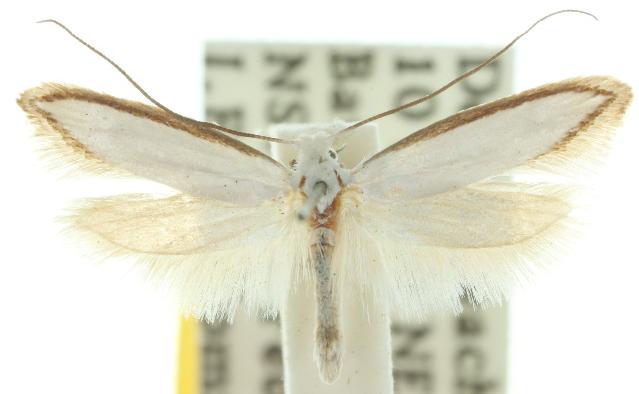
| ROESLERSTAMMIIDAE, TINEOIDEA | (donherbisonevans@yahoo.com) and Stella Crossley |

(Photo: courtesy of CSIRO/BIO Photography Group,
Centre for Biodiversity Genomics,
University of Guelph)

| ROESLERSTAMMIIDAE, TINEOIDEA | (donherbisonevans@yahoo.com) and Stella Crossley |

(Photo: courtesy of CSIRO/BIO Photography Group,
Centre for Biodiversity Genomics,
University of Guelph)
The Caterpillar of this species initially has no obvious legs, and is hairless with deeply incised abdominal segments. The early instars are red with yellow speckles, with a yellow and white dorsal mark on the second segment. and have a black head with a white top and pale lines each side. The early instars just eat the under-suface of leaves of their foodplant, which is
The last instars develop a full set of 16 legs and are coloured dark purple with long hairs, and have a yellow head. These later instars eat whole leaves externally, unprotected.
The pupa has long extensions accommodating the developing antennae. The pupa is encased in a dense white cocoon.
The adult moths are white with a brown line along the costa and margin of each forewing. The hindwings are off-white. The antennae are as long as the forewings. The wingspan is about 1.3 cms.
The species has been found in Australia in
Further reading :
Edward Meyrick,
Descriptions of Australian Micro-lepidoptera XVI Tineidae,
Proceedings of the Linnean Society of New South Wales,
Series 2, Volume 7, Number 4 (1892), p. 593, No. 173.
 caterpillar |  butterflies |  Lepidoptera |  moths |  caterpillar |
(written 2 October 2022)